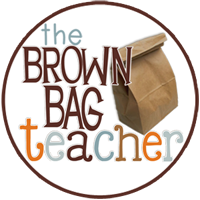Here's post 2 in my mini-series on the activities during small group reading time. My last post briefly described how I get my students started and slowly introduce one activity at a time. This one is focused on introducing each activity and my structure. Each of the activities will get their own post with details on what I do for each in the upcoming posts.
I have five "must-do" activities that students rotate through. They do one each day. Here are the five. Those of you familiar with Daily 5 might see some similarities here, but there are many differences as well.
1- Guided Reading: This groups job is to meet with me first thing. I do a traditional guided reading lesson with this group.
2 - Deeper Reading: This group meets with me second. This is where I concentrate on what many are calling "close reading."
3 - Fluency: I am a strong believer in the correlation of fluency and comprehension. Students who can read fluently spend less time decoding and can therefore spend more time comprehending.
4 - Listening: Like fluency, I feel strongly that listening to a book read aloud is so helpful to students; it builds fluency and comprehension. I think it's just as important in the upper grades as in the lower grades.
5 - Genre Activities: This is where I'm able to get students reading and responding in various ways. It's also where I put in some reading tasks cards and activities.
Be sure to keep following this series for my in-depth posts on each of these activities.
The Structure
I have 5 reading groups. With my large class size, 33 last year, I may have up to 8 students in a reading group. I like to keep my lower groups as small as possible, so the larger ones are always my higher level groups. Last year, I was able to have no more than 7 in a group. Sometimes, I have a super low student that needs his/her own group. I meet with this student for a few minutes each day between groups and assign him/her activities custom fit for his/her needs.
Sorry for the terrible picture. I snapped it fast as I was cleaning up my room at the end of the year.
I print the names of the students in each group on a half-size sheet of paper and mount to a card stock with a magnet on the back. I post labels for the 5 rotations on the board. I hang the group card under the activity they are assigned for that day. That's the activity they start with, except for the deeper reading group. The deeper reading group might start by reading the passage we'll be looking at together or they might just start on their literature circle response. Guided reading starts at my table, and all the other groups go right to their "jobs". They must complete their assigned task first, before anything else.
A closer look.
Each morning, I just rotate the groups in a clockwise fashion. Directly under the space for the group card, I write in directions for students. I direct the pages for the listening group, give the story and page numbers for the fluency group, and any directions to the deeper reading group. For the genre group, I post a vertical strip of numbers. Students do the corresponding numbered genre activity. I change the number strip at the beginning of each new rotation.
When students finish the activity they "must-do" for the day, they work on literature circle assignments or read a choice book. I'm considering adding some reading task card options as well if their literature circle assignments get done.
How do you organize and structure students during your small group reading time?








.png)











































